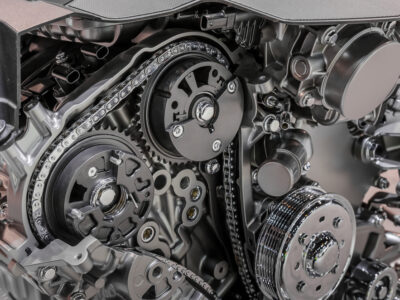
Renault Clio Injection System Check & Maintenance (Complete, Practical Guide)

Keeping the fuel injection system healthy is the difference between a smooth, efficient Renault Clio and one that drinks fuel, hesitates, and lights up the dashboard like a Christmas tree. Below, we deliver a clear, expert guide to diagnose, maintain, and fix injection issues on petrol, diesel, and hybrid Clio models—quickly and accurately.
- What the Injection System Does on a Clio
- How Many Injectors Does a Renault Clio Have?
- Symptoms That Point to Injection Trouble
- Quick Triaging: What To Check First
- Fault Codes That Commonly Involve Injection
- The Core Components and How They Fail
- Step-by-Step: Professional-Level Diagnosis (At Home or Workshop)
- Preventive Maintenance That Actually Works
- Petrol vs Diesel vs Hybrid: What’s Different?
- DIY-Friendly Actions (Safe and Effective)
- Cost Ranges (Indicative)
- When To Stop Driving and Book a Specialist
- Troubleshooting Shortcuts (Cheat Sheet)
- Maintenance Strategy for Long Engine Life
- FAQs
What the Injection System Does on a Clio
- Meters and atomizes fuel precisely for each cylinder
- Coordinates with sensors and the ECU to adjust timing and quantity
- Improves cold starts, throttle response, emissions, and overall economy
Bottom line: when injection accuracy drops, drivability suffers.
How Many Injectors Does a Renault Clio Have?
Most Clios use four injectors—one per cylinder.
| Clio Generation / Engine | Cylinders | Typical Injection Type |
|---|---|---|
| Petrol 1.2 / 1.4 / 1.6 (older NA) | 4 | Multi-point port injection |
| TCe turbo petrol (0.9, 1.0, 1.2) | 3–4 | Port or direct (varies by engine) |
| 1.5 dCi diesel | 4 | Common-rail high-pressure |
| E-Tech Hybrid | 4 | Direct-injection petrol integrated with hybrid system |
Symptoms That Point to Injection Trouble
Engine behavior
- Rough idle, shuddering, or misfires
- Flat spots or hesitation on acceleration
- Hard starting, especially when cold
- Power loss or limp-home mode
Fuel & exhaust clues
- Excessive fuel consumption
- Strong fuel smell or black smoke (rich mixture)
- Diesel clatter worse than usual or white smoke on cold start
Dashboard warnings
- Check Engine light
- Injection fault message
- Glow plug light flashing (diesel)
When two or more of these appear together, prioritize an injection check.
You may be interested in reading Renault Clio Handbrake Adjustment: The Ultimate Guide
Renault Clio Handbrake Adjustment: The Ultimate GuideQuick Triaging: What To Check First
- Fuel quality & level: poor fuel or water contamination can mimic injector faults.
- Recent maintenance: overdue fuel filter? MAF/MAP dirty?
- Vacuum/air leaks: unmetered air skews mixture.
- Battery health: low voltage upsets ECU and sensor readings.
- OBD-II scan: capture freeze-frame and live data before clearing codes.
Fault Codes That Commonly Involve Injection
- P02xx: injector circuit or performance (cylinder-specific)
- P0087/P0088: fuel rail/system pressure too low/high
- P0300–P0304: random/multiple misfire or cylinder-specific misfire
- P0190–P0193: fuel rail pressure sensor circuit range/performance
Use codes to narrow the suspect list, then confirm with tests (pressure, leak-off, balance).
The Core Components and How They Fail
| Component | What It Does | Failure Signs |
|---|---|---|
| Injectors | Atomize fuel into each cylinder | Misfires, rough idle, high fuel use, black smoke |
| High-pressure pump (diesel) | Generates rail pressure | Hard start, low power, rail pressure codes |
| Fuel rail & pressure sensor | Measure and regulate pressure | Hesitation, stalling, fault codes |
| Fuel filter | Traps contaminants/water | Starvation at high load, pump strain |
| Pressure regulator | Keeps pressure within spec | Rich/lean running, surging |
| MAF/MAP sensors | Inform ECU of air mass/pressure | Poor throttle response, rich/lean trims |
| ECU & wiring | Control and command injection | Intermittent faults, injector circuit codes |
Step-by-Step: Professional-Level Diagnosis (At Home or Workshop)
1) Scan the ECU properly
- Read codes, don’t clear them yet.
- Capture freeze-frame to see RPM, load, ECT, trims at failure moment.
- Check long-term and short-term fuel trims (petrol):
- Large positive trims → lean (possible low pressure, intake leaks)
- Large negative trims → rich (leaky injector, stuck regulator)
2) Visual check and safety
- Inspect fuel lines, injector O-rings, pump housing, and return lines for dampness or diesel smell.
- Any leak = immediate repair.
3) Fuel pressure tests
- Petrol (port/direct): typically around 3–4 bar at idle for port systems (varies; confirm for your engine).
- Diesel common-rail: hundreds of bar at idle, rising steeply under load.
- Low pressure → suspect pump, clogged filter, weak in-tank lift pump (where fitted), or a pressure regulator fault.
4) Injector performance and balance
- Petrol: check cylinder contribution via misfire counters and disable-test (if supported).
- Diesel: perform leak-off (return flow) test; excessive return on any injector points to internal wear.
5) Air metering sanity check
- Inspect and clean MAF/MAP with sensor-safe cleaner.
- Check intake hose splits, loose clamps, or oil-soaked filters.
6) Electrical integrity
- Wiggle test harnesses and connectors with live-data running.
- Verify injector pulse with a noid light or oscilloscope where possible.
7) Final confirmation
- If one injector is suspect: swap test (where practical) to see if the misfire follows the injector.
Preventive Maintenance That Actually Works
| Task | Recommended Rhythm |
|---|---|
| Fuel filter replacement | Every 20,000–30,000 km (diesel often sooner) |
| Petrol injector cleaner (quality additive) | Every 8,000–10,000 km |
| Ultrasonic cleaning (petrol) | 30,000–50,000 km or as needed |
| Diesel injector coding check | 40,000–60,000 km or after injector work |
| MAF/MAP inspection & cleaning | Every major service |
| Tank drainage/water separation (diesel) | As needed; monitor with water-in-fuel warnings |
Petrol vs Diesel vs Hybrid: What’s Different?
- Petrol (port/direct): respond well to high-quality fuel additives and ultrasonic cleaning. Direct-injection tips are more sensitive to deposits; use top-tier fuel and periodic cleaners.
- Diesel common-rail: very high pressures; precision parts demand clean fuel and timely filter changes. DIY “flushes” can backfire—bench testing and calibration are safer.
- E-Tech Hybrid: injection works alongside hybrid control; cold-start and short-trip patterns can accelerate deposits. Keep software up to date and maintain filters religiously.
DIY-Friendly Actions (Safe and Effective)
- Use only sensor-safe cleaners for MAF/MAP.
- Replace the fuel filter on schedule (observe priming procedures on diesel).
- Use reputable fuel system cleaners for petrol engines; adhere to dosage.
- Keep the air filter clean and the intake airtight.
- Log symptoms, codes, and conditions; patterns speed up diagnosis.
Not DIY: diesel injector coding, leak-off interpretation without proper kit, high-pressure pump work.
Cost Ranges (Indicative)
| Service | Typical Range (parts/labour) |
|---|---|
| Petrol injector cleaning | $60–$150 |
| Petrol injector replacement (each) | $120–$300 |
| Diesel injector reconditioning (each) | $150–$350 |
| Diesel high-pressure pump replacement | $600–$1,200 |
| Fuel filter change | $30–$100 |
| Professional diagnostic session | $80–$200 |
Prices vary by region, engine variant, and parts brand.
When To Stop Driving and Book a Specialist
- Diesel rail pressure codes (P0087/P0088)
- Strong fuel smell or visible leaks
- Repeated misfires (risk to catalytic converter/DPF)
- Black smoke under light throttle
- Hard starts paired with noisy high-pressure pump
Prompt attention can save injectors, pumps, and emission systems from collateral damage.
You may be interested in reading Renault Clio Handbrake Adjustment: The Ultimate Guide
Renault Clio Handbrake Adjustment: The Ultimate Guide Toyota RAV4 Oil Change Price: The Ultimate Cost Guide for Smart Owners
Toyota RAV4 Oil Change Price: The Ultimate Cost Guide for Smart OwnersTroubleshooting Shortcuts (Cheat Sheet)
- High fuel use + rich trims + fuel smell → leaking injector or stuck regulator
- Lean trims + hesitation under load → clogged filter or weak pump
- Cold start rough + white smoke (diesel) → glow plug circuit or injector leak-off imbalance
- Hot restart hard → pressure bleed-down (check regulator and injectors)
- Misfire isolated to one cylinder → swap injector or coil to confirm root cause
Maintenance Strategy for Long Engine Life
- Buy fuel from consistent, reputable stations.
- Add petrol injector cleaner at regular intervals.
- Never skip fuel filters—cheap insurance for pumps and injectors.
- Keep the air side healthy: clean filter, sealed intake, clean MAF/MAP.
- Act on warning lights immediately—don’t keep driving and guessing.
- For diesel, schedule periodic professional leak-off and coding checks.
FAQs
What should we do first if the Clio shows injection problems?
Scan the ECU, record codes and live data, check fuel filter age and intake leaks, then verify fuel pressure before replacing parts.
Can we fix a rough idle with cleaner alone?
If deposits are mild (petrol), a high-quality cleaner may help. Persistent misfires require proper testing and possibly ultrasonic cleaning or replacement.
Why is the diesel Clio more sensitive to fuel quality?
Common-rail systems operate at extreme pressures; tiny contamination damages injectors and pumps quickly. Fresh filters and clean fuel are critical.
How often do injectors typically last?
Many last 100,000–160,000 km or more with clean fuel and timely filtration. Driving profile and fuel quality are big variables.
 Renault Clio Handbrake Adjustment: The Ultimate Guide
Renault Clio Handbrake Adjustment: The Ultimate Guide Toyota RAV4 Oil Change Price: The Ultimate Cost Guide for Smart Owners
Toyota RAV4 Oil Change Price: The Ultimate Cost Guide for Smart Owners MINI Cooper Timing Chain Replacement Cost Guide (2024–2025)
MINI Cooper Timing Chain Replacement Cost Guide (2024–2025)Do hybrids need different injection care?
The basics are the same, but more short trips and cold starts mean deposits can accumulate faster. Maintain filters, use good fuel, and keep software updated.
If you want to know other articles similar to Renault Clio Injection System Check & Maintenance (Complete, Practical Guide) you can visit the category Maintenance.
Deja una respuesta






More content of your interest